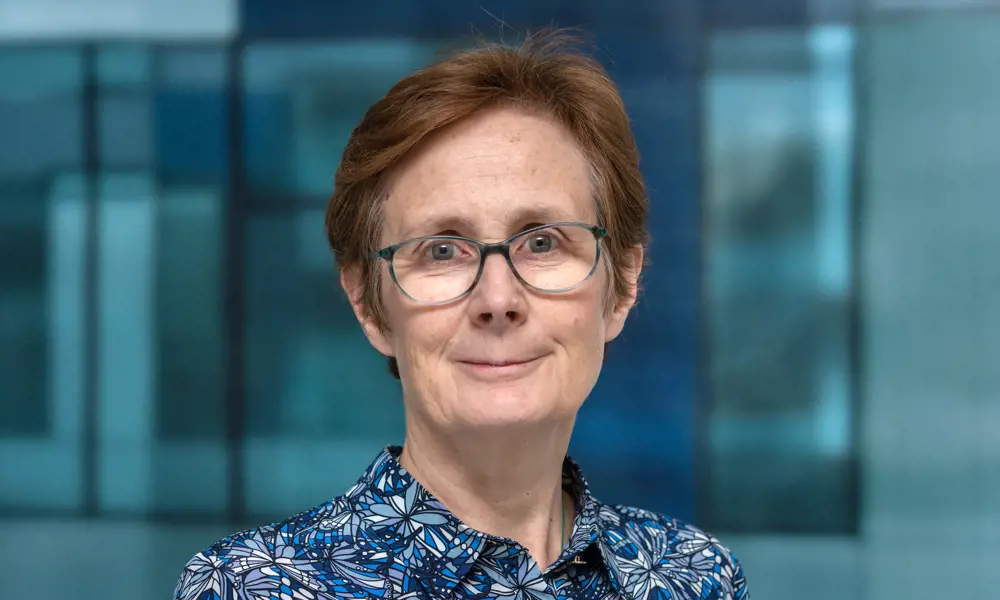
Teams that count
Had Dervilla Mitchell CBE FREng followed her early interest, her career might have involved more earthly engineering pursuits than the airport projects and iconic buildings of her working life. “At university, my great passion was geotechnics – soil,” she explains. Working on soil was unlike most projects thrown at engineering students. Soil was less straightforward. “Soil wasn’t a homogeneous material,” she says. “One had to try to understand it better.”
When it came to finding a job after graduating with a degree in civil engineering from University College Dublin, the answer didn’t lie in the soil. Arup offered Mitchell a job in structural design. “The idea of engineering, working in the built environment, was not in any way strange in my family,” she adds. Her father was an architect, her grandfather and uncles were engineers. “Although nobody encouraged me into engineering, nobody discouraged me either. When I said I wanted to be an engineer, they said ‘Very interesting Dervilla, carry on’. I chose civil engineering because that was closest to the built environment.” An uncle also advised her to spend her summer holidays working, encouraging her to go to Arup during breaks from university.
For Mitchell, that first career move was the beginning of what she describes as a common theme in her working life. “Sometimes it is about taking the opportunities as they arise.” Some people think of their careers as a linear path, she adds. In reality, it is a more undulating or circuitous path. “I could never have imagined when I started out that I would be sitting in London, being the recipient of the President’s Award, being engaged with the Academy, attending the sort of meetings or doing the sort of projects that I do.”
I could see then that it was the application of knowledge, and that learning, that was important, not the knowledge itself
Mitchell highlights two other early influences in her career choice. As a schoolgirl, she visited her father’s architectural practice. “I remember having seen people working in my dad’s office as an architectural team. I absolutely knew from about 12 years old that I wanted to do something that involved a team.” The second key influence Mitchell recalls was when a university lecturer, talking about concrete and materials, discussed practical issues and what to do with an education. “I could see then that it was the application of knowledge, and that learning, that was important, not the knowledge itself.”
Mitchell’s first job was in Arup’s Dublin office. After four years, her husband, who she met at the firm, had an opportunity to study in the US. The couple moved to Massachusetts where she worked as a structural engineer on office and hotel developments for Weidlinger Associates. In 1986, they returned to the UK and Mitchell moved to Arup’s London offices.
Mitchell has taken on progressively senior roles at Arup, working on projects of increasing size and complexity. Her career has included iconic civil engineering projects, from landmark buildings such as Portcullis House in Westminster to several airport projects, including Terminal 2 in her home city of Dublin and Terminal 5 at Heathrow.
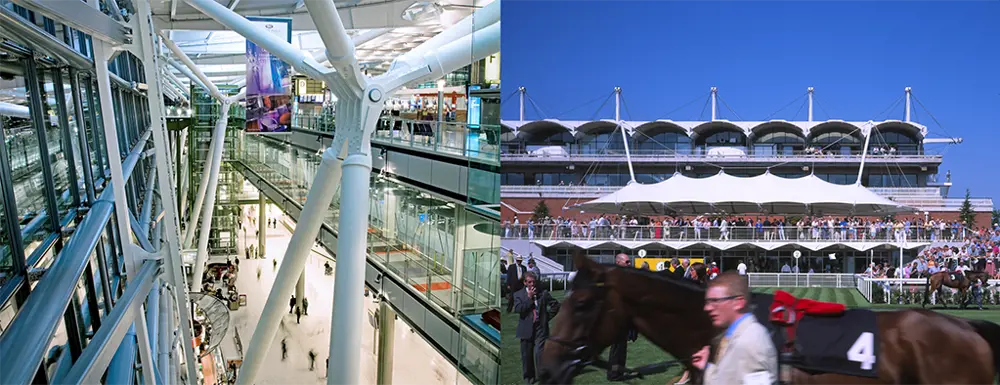
Projects that Mitchell has worked on include Heathrow Airport’s Terminal 5 (left) and Goodwood Racecourse (right) © David J Osborn/Graham Gaunt
Built on relationships
🏇 The collaboration between architects and engineers on the projects that Mitchell has worked on
Clients arrive at engineering practices like Arup with projects of all sizes and shapes, from major airports to bus shelters. In her career Dervilla Mitchell has encountered many projects. The teamwork that develops between architects and engineers sticks out as a theme in projects that she remembers as being particularly enjoyable.
For Mitchell, Heathrow’s Terminal 5 is her favourite project. However, she has fond memories of earlier projects. For example, Mitchell managed the development of a new paddock area at Goodwood racecourse in West Sussex. Arup had previously worked on the masterplan for Goodwood and the new project involved working with the owner of the racecourse. “I felt that it was a very personal project for them. It was their investment in the future of their very traditional racecourse: to make it fit and ready and exciting for the future.” The delight, says Mitchell, is working with clients to produce something that they are really pleased about.
It also helps when you are working with architects who actively seek engineering advice. At Goodwood, the architect was Michael Hopkins and Partners, who she also worked with on another favourite project, the development of Portcullis House, the Westminster offices for Parliament. “I liked working with [Hopkins]. They were extremely demanding of the engineers in terms of producing a pleasing design but the engineering was always visible – the collaboration of the engineering and the architecture was really very critical.”
Mitchell enjoyed working with the Richard Rogers architect’s practice behind Terminal 5. “Both of those practices wanted to understand the engineering, they wanted to understand the rationale, therefore there was a close and curious and understanding relationship between architects and engineers.”
While Mitchell has chalked up a roster of enjoyable projects, one stands out, Terminal 5. It wasn’t just the size of this £4 billion development at Heathrow Airport that appealed to Mitchell, but her role on the project. “I had to make a big step to go and take that on. I left Arup in central London and based myself at a co-located office at Heathrow for six years.” It was also the opportunity to develop her belief in working with teams. Mitchell led an Arup team that, at its peak, had 60 staff based at Heathrow and 300 across the UK.
The teamwork at Heathrow extended beyond Arup. “Whether it was at Terminal 5 or later, when I went back to do the expansion at Heathrow, we worked in integrated design teams: collaborating with other companies, listening to different disciplines’ ideas, being open to new ideas. I found that very exciting. I think that enables us to get to better solutions.”
Terminal 5 was also Mitchell’s opportunity to master the management of diverse specialisms across a large-scale programme “Why was the roof a single span?” she explains. “Why was that connection designed like that? Why was the layout of the building the way it was? I felt that I knew pretty much everything.”
Her job was to take a holistic view, understanding the client’s needs while maintaining technical day-to-day communications with the Arup team and project collaborators. “That is a key moment in any person’s career. It was also a very important time in my personal development, in my growth in terms of moving into leadership, being visible.” Terminal 5 was of course was a very visible public project.
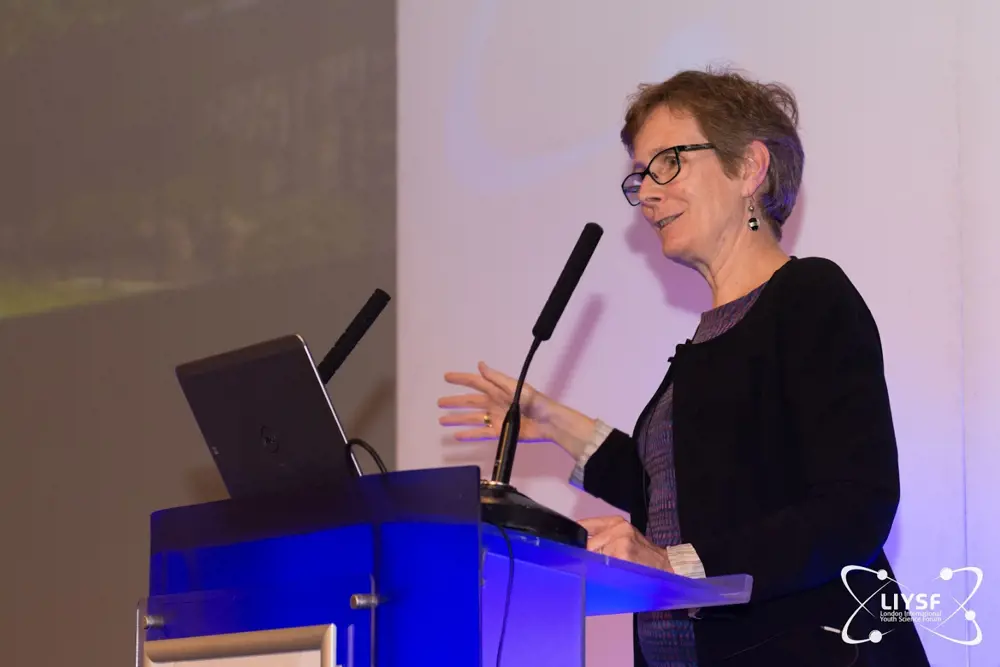
Mitchell sees it as a part of her mission as an engineer to inspire and educate students about a career in engineering and construction. As a school governor she has inspired girls to pursue engineering careers. Within Arup she encourages and personally supports work experience placements for school and university students
Championing inclusion and women in engineering
That visibility has also taken Mitchell into the wider world of engineering. For example, at the Royal Academy of Engineering, she chaired the Academy’s Diversity and Inclusion Committee for three years. For Mitchell, this area of concern almost crept up on her. “In my first job,” she explains, “I never even noticed that I was the only woman for a long time. I was well looked after, nurtured, developed by those who I worked with.”
Mitchell decided to get involved when she realised how few women there were in her industry. “I did work hard to champion getting more women into the industry and maintaining women who were already in and giving them satisfying and rewarding careers.” Her engagement and approach began to change after she concluded she could do more than just ask challenging questions. “It was for me to step forward and make a difference for others.” Being more visible in her diversity and inclusion work, both inside Arup, with the Academy and beyond, has positioned Mitchell as a role model for other women.
Diversity is about the numbers and metrics, while inclusion is about the individual feeling welcome, feeling that they have a voice and that they have meaningful roles and careers
What started as concern for women in engineering has moved on to wider concern about diversity and inclusion. “Diversity is about the numbers and metrics, while inclusion is about the individual feeling welcome, feeling that they have a voice and that they have meaningful roles and careers.”
Here the conversation is about race, disability, gender, sexuality, and neurodiversity, which encompasses dyslexia, autism and other hidden ways in which people can feel excluded. “I am an advocate of inclusion as the banner under which we have a lot of work to do across a range of dimensions of diversity,” says Mitchell. As well as playing a leading role in the Academy’s work on diversity, she also brings her determination to promote diversity, equality and inclusion to her work as a member of Arup’s Group Board.
Diversity is more than just doing right by staff; it is also important for employers. As Mitchell said recently: “If you have a wide range of skills and a wide range of perspectives, you’re much more likely to develop successful solutions that meet the needs of customers.” She adds “When you have a diverse team and they are working collaboratively, constructively, listening to one another, and engaging with each other, it does lead to successful outcomes. And that is what we are really after.”
Mitchell's journey into net zero
Mitchell accepted an invitation to chair a project on decarbonisation for the National Engineering Policy Centre (NEPC) – led by the Royal Academy of Engineering – which aims to look at some of the engineering challenges in the UK’s stated ambition of reaching net zero carbon emissions by 2050.
“I did not consider myself to be an expert in the field of climate change, sustainable development, net zero or anything like that,” Mitchell admits. “I did question whether I had the skills and understanding to really deliver change.” She agreed to take on the task because she concluded that, as a neutral party, she had no vested interest in promoting any particular technology or form of energy.
Mitchell has set herself goals for her work with the NEPC. One issue she wants to tackle is increasing individual awareness of the urgent need for change. She also wants to encourage wider understanding of the topic within the engineering community and, in her own domain, the construction industry. “It is an extraordinarily complex challenge for us all.” One task is to work out how the NEPC can influence policy and support government departments.
The oil and gas giants may have risen on the back of carbon emissions, but they are well placed to move energy production to the next stage
An important lesson is that there is no point in demonising the fossil fuels industry. The oil and gas giants may have risen on the back of carbon emissions, but they are well placed to move energy production to the next stage. “In transforming their business, they will make a significant contribution in this area,” says Mitchell. They not only have the financial means but the knowledge and experience to make a significant contribution in attempts to deliver net zero.
In civil engineering, there have been signs of progress for some time. As an example, she points to airport projects she has worked on, which long ago ceased the energy-wasteful practice of running empty escalators all the time. More recently she has seen clients taking more imaginative approaches to climate change, such as reusing buildings rather than tearing them down and starting from scratch. She likens the pursuit of net zero to preparing somebody for the Olympic Games. “Every single little marginal gain had to be explored just to win the prize.”
Mitchell’s work for the NEPC is by no means her first foray into the wider policy arena. In 2014 she became member of the Council for Science and Technology (CST), whose role is to advise the Prime Minister on science and technology policy issues. Mitchell was one of the leaders of its work on harnessing technology to meet increasing care needs. She also led its 2018 work on Computational Modelling: Technological Futures, a topic that roared to prominence when its computer modelling hit the headlines during the COVID-19 pandemic. Mitchell describes the CST as “probably the most intellectually challenging and rewarding experience. You have to really think at a national level and outside of your own experience.”
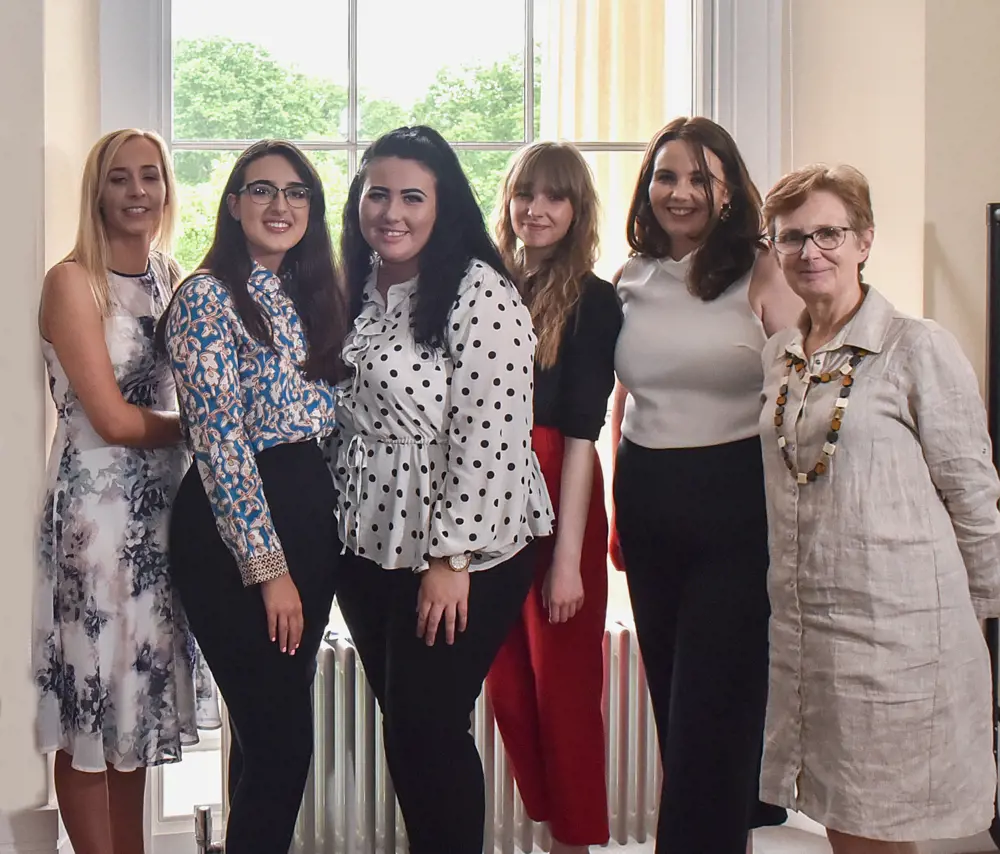
Mitchell (right) with Arup’s 2019 Top 50 Women in Engineering winners. In 2019, the award recognised exceptional apprentices; Mitchell won the award herself in 2016 and now encourages staff to enter © Daniel Imade/Arup
Pandemic response and systems level thinking
In both her public work and her position at Arup, Mitchell now finds herself thinking increasingly about the longer-term future. Net zero and COVID-19 are watersheds that upset the incremental, business-as-usual way of thinking. They are changing how engineers approach their work.
Take the global pandemic. As leader of Arup’s UK, India, Middle East, and Africa (UKIMEA) region Mitchell was responsible for keeping the firm’s UKIMEA offices up and running while “we all went into lockdown very suddenly”. She explains: “Yet when it happened, with a bit of an investment in technology, we enabled 100% of our workforce be working away from the office.” This meant ensuring that over 6,000 people across 23 offices in the UK, India, Middle East, and South Africa could work remotely pretty much immediately, changing how Arup thinks about how the firm operates. “Effectively, we are not rushing back to the office,” she adds.
As a practice, that has a lot to do with creating the places where people work, Arup’s clients have naturally called on the firm for help in their own responses to the global pandemic. “We did a lot of work for airports across the world, looking at what social distancing would mean to them. How might they manage passengers with the restrictions?” The firm’s engineers are also experts in heating, ventilation and air conditioning (HVAC) and have done a lot of work on air transmission in buildings and how HVAC systems can be used to minimise the likely transmission of disease within offices.
More broadly, transport, another of Mitchell’s professional interests, may be very different in a post-pandemic era. One beneficiary could be cycling, something of a passion for Mitchell who cycles into the office from her home in London. Before we have a vaccine and people are comfortable to cram onto crowded buses and trains, we are going to have to consider broader means of transport. “You can’t encourage cycling just by saying it. You must make sure that the infrastructure to enable it is in place, or it won’t happen in a safe way.”
“If you’re making decisions on something, how do you understand the unintended consequences?” Look at the systems level
Career timeline and distinctions
Studied civil engineering at University College Dublin, 1980. Joined Arup Dublin, 1980. Joined Weidlinger Associates, Massachusetts, 1984. Joined Arup London, 1986. Fellow of the Royal Academy of Engineering, 2007. UKRC Woman of Outstanding Achievement Award for Leadership and Inspiration, 2011. Chair of Royal Academy of Engineering Diversity and Inclusion Committee, 2011–2019, Became a member UK Government Council for Science and Technology,2014. CBE for Services to Engineering, 2014. Honorary Doctorate from University College Dublin, 2016. Top 50 ‘Women in Engineering in the UK’, Women’s Engineering Society in conjunction with Daily Telegraph, 2016. Received Building magazine’s Woman of the Year award, 2017. Fellow of the Irish Academy of Engineering, 2019. Financial Times 100 influential women in UK engineering, 2019. Received President’s Medal, 2020.
Transport and mobility is a good example of systems thinking, one of Mitchell’s pet topics. With transport it would be far too easy to consider systems for trains, buses and cars as separate entities on their separate tracks. The real benefits come in tying them all together as a system of systems. The London commuter, for example, needs information on the whole transport system before they can decide what to do when, for example, the tube system is disrupted. “Ultimately, if we can feed real-time information into a system to pick up on our phones, that will give the public choice and it must deliver a more efficient system. That is a system of systems.
“I am very keen on thinking about this approach and systems of systems. It helps one understand the totality rather than just an element. It helps to understand the interactions between one’s decisions.” This approach brings many benefits. “If you’re making decisions on something, how do you understand the unintended consequences?” Look at the systems level, she urges. Evaluate solutions for scenarios and you are in a better position to take the right decision or, as she puts it, the least wrong decision.
Mitchell’s ‘future thinking’ comes with different time horizons. The most immediate challenge will be to see how engineers can help society to navigate the next two or three post-pandemic years, before vaccination can restore some sense of normality. Beyond that, it may be a few decades before the UK’s 2050 target for net zero emissions is reached, but for that to happen engineers must work hard now. On another medium- to long-term horizon, Mitchell is thinking about another hot topic in policy circles. “How can science and technology contribute to the levelling up agenda?” Mitchell asks. Tackling that challenge alongside net zero will provide plenty of opportunities for teamwork and systems thinking not to mention attention to diversity and inclusion.
***
This article has been adapted from "Teams that count", which originally appeared in the print edition of Ingenia 84 (September 2020).
Keep up-to-date with Ingenia for free
SubscribeRelated content
Civil & structural

Building the Shard
The Shard is one of London's most iconic buildings. The tallest in Western Europe, it was designed by Italian architect Renzo Piano and dominates the city’s skyline. Ingenia spoke to John Parker, project director for structural engineers WSP, who outlined the engineering decisions made in building the enormous steel and glass structure.
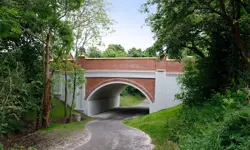
FlexiArch
Arch bridges are strong, durable and require little maintenance. However, very few had been built since the early 1900s until the FlexiArch was developed and launched in 2007. Now, there has been a minor renaissance for this ancient form of construction.
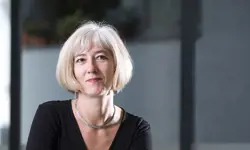
Creating user-friendly buildings
For Michelle McDowell, a former Business Woman of the Year, a passion for joined-up design thinking and building information modelling with a user-friendly approach has enabled her to pioneer revolutionary changes in her field.
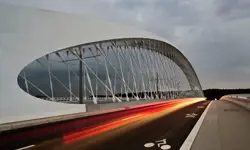
Troja Bridge
In November 2014, one of the world’s largest network arch bridges was officially opened in Prague. The UK may soon have its first network arch bridge if the go-ahead is given for a new rail project in Manchester.
Other content from Ingenia
Quick read

- Environment & sustainability
- Opinion
A young engineer’s perspective on the good, the bad and the ugly of COP27

- Environment & sustainability
- Issue 95
How do we pay for net zero technologies?
Quick read

- Transport
- Mechanical
- How I got here
Electrifying trains and STEMAZING outreach

- Civil & structural
- Environment & sustainability
- Issue 95